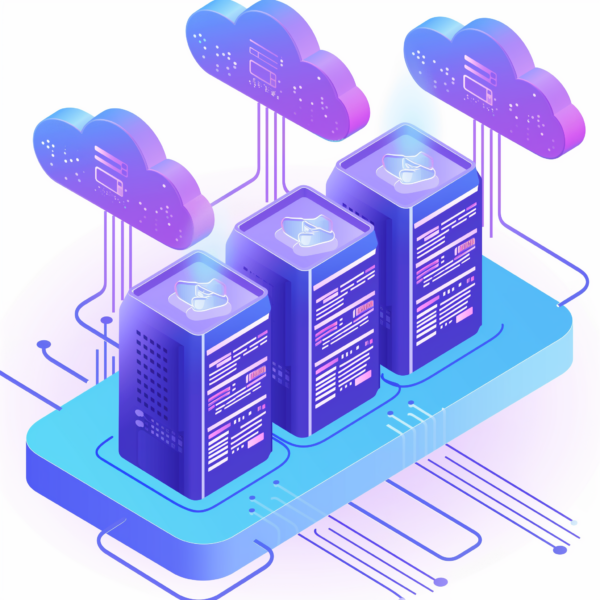
Cloud computing is crucial for businesses, offering flexibility, scalability, and efficiency. In addition to it, many developers, IT experts, and businesses prefer Platform as a Service (PaaS) for their extensive application development environment.
PaaS eases app creation by handling infrastructure, aiding 3D designers, architects, and machine learning experts requiring strong resources.
In this article, we will explain what PAAS is, what are its advantages, and how your business can benefit from it.
What is Platform as a Service (PaaS)?
Platform as a Service (PaaS) is a cloud computing model that offers services for app development. PaaS is a hybrid of Software as a Service (SaaS), which provides ready-to-use software applications over the Internet, and Infrastructure as a Service (IaaS), which offers virtualized computing resources over the web.
This type of cloud computing services provide a development tools and platform with operating systems, middleware, tools, and databases on the provider’s infrastructure. PaaS aids the entire web app lifecycle: building, testing, deploying, managing, and updating. Developers benefit from focusing on creativity, not maintenance – OS updates, storage, or infrastructure.
This speeds up development, helping businesses launch apps faster. For users, it means quicker 3D rendering, efficient machine learning, and fast architectural projects with security.
PaaS Core Components
The core components of PaaS are designed to offer a seamless development experience by providing all the tools and services required for application development and deployment.
These components include:
- Integrated Development Environment (IDE): PaaS platforms offer an IDE that allows developers to write, test, and deploy their code directly within the Platform. This environment supports multiple programming languages and frameworks, making it versatile for various development projects.
- Operating Systems: PaaS providers manage the operating systems, ensuring they are always up-to-date and secure. This relieves developers from the task of OS management, allowing them to concentrate on their application’s functionality.
- Middleware: Middleware services facilitate the development of scalable and performant applications by providing standard features such as web servers, content management systems, and messaging systems.
- Database Management: PaaS solutions include systems developers can use to store, retrieve, and manage data efficiently. The cloud service providers manages these systems, ensuring high availability and almost no security issues.
- Computing Resources: PaaS provides scalable computing resources, allowing developers to adjust the computing power according to the demand. That is particularly beneficial for tasks that require intensive computing power, such as 3D rendering and machine learning.
- Networking: Networking components within PaaS ensure that applications are accessible online. This includes load balancers, domain name system (DNS) management, and firewalls.
- Storage: PaaS offers scalable storage solutions, enabling developers to store large amounts of data without worrying about physical storage infrastructure.
- Security: Security is a critical component of PaaS, and providers offer robust security measures to protect applications and data. These measures include encryption, identity management, and compliance with industry standards.
These core elements create the foundation of PaaS, offering a complete platform for app development. For our target audience, this means access to a powerful suite of tools and services that can significantly enhance the efficiency of their projects.
Whether developing fresh 3D rendering software, crafting detailed architectural designs, or training learning models using GPU servers for machine learning, PaaS provides essential resources and scalability for these tasks.
Understanding the core of the Platform as a Service is crucial for professionals needing high computing power. PaaS simplifies the development process and offers significant advantages in scalability, efficiency, and cost savings. As we explore the benefits of PaaS, it’s clear how this cloud model aids growth for businesses and developers.

Advantages of Platform as a Service (PaaS)
The PaaS (Platform as a Service) model has fundamentally transformed software development and deployment, providing a robust framework that overcomes numerous technological challenges.
Exploring in detail the advantages of PaaS, we reveal its essential role in driving digital transformation, growth, efficiency, and strategic innovation within the cloud-centric ecosystem of today’s business world.
Seamless Scalability: PaaS as a Growth Enabler
One of the most compelling advantages of Platform as a Service is its inherent scalability, which acts as a critical growth enabler for businesses. PaaS platforms offer a scaling mechanism that is both seamless and automatic. This way it allows companies to scale their computing services up or down based on real-time demands without any significant downtime or investment in physical infrastructure.
This flexibility benefits 3D artists and machine learning specialists, who often experience fluctuating computing needs. For instance, a machine learning project might require substantial computational power during the training phase of models but less so during the development phase.
With their automatic allocation of necessary resources, the PaaS solution ensures that these changing demands are met efficiently, enabling businesses to quickly deploy and focus on innovation rather than infrastructure management.
Enhancing Development Efficiency with PaaS
PaaS significantly enhances development efficiency by providing a comprehensive development platform with an integrated development environment (IDE), pre-built app development services, and additional services. These settings enable development teams to deploy their applications and make changes on the fly.
For graphic designers and professionals using architectural rendering services, this implies swiftly iterating on designs without backend worries. Many PaaS providers offer specialized services tailored to specific needs, such as dedicated graphics hardware for rendering or machine learning libraries, further boosting productivity.
The automatic updating feature of PaaS ensures that all the software components are up-to-date, reducing the risk of security gaps and compatibility issues and thereby allowing developers to concentrate on building applications rather than managing infrastructure.
Cost Optimization with Platform as a Service
The cost optimization benefits of PaaS cannot be exaggerated. By removing hardware and software management difficulties, PaaS allows businesses to significantly reduce their capital expenditure on physical infrastructure and IT staffing.
This model works on a pay-as-you-go system, so businesses only pay for resources used, resulting in cost savings that benefit startups and small businesses. Even more cost-saving models exist nowadays – subscriptions for a period where all computing is added to the price.
Additionally, the efficiency gains from using PaaS solutions translate into reduced development times and faster time-to-market, further contributing to cost optimization. As 3D designers and machine learning specialists often work on complex projects that include 3D rendering or deep learning applications, accessing high-powered computing services without investing in their Platform or managing a self-built platform can be a game-changer.
This cost-effective access to high-end computing services enables smaller teams and businesses to compete in markets previously dominated by larger entities with more substantial resources.
Summarized, here are the most important benefits and advantages of PaaS:
- The cloud computing model of PaaS offers a significant business advantage by providing a scalable and efficient solution for application development.
- Through PaaS solutions, businesses can leverage cloud resources for various applications, from 3D render software to deep learning projects, without requiring extensive physical infrastructure.
- Choosing a reliable provider is crucial, as many PaaS providers offer different levels of service. The right partnership can help businesses bring their products to the market faster than developing on a self-built platform.
Choosing the Right PaaS Provider for Your Business
With the wide choice of PaaS platforms available today, selecting the right reliable provider is a must to leverage the full potential of PaaS. The perfect provider must offer a complete solution that matches your project needs, whether 3D rendering, machine learning, or high-computing tasks.
Factors to consider include the range of cloud computing service offered, the scalability options, the level of customer support, and the security measures set to protect your data and applications. Some PaaS providers provide trial periods, a great chance to test services before committing to the long-term.
Being a reliable and trustworthy cloud service provider, MaxCloudON offers a free trial. The trial includes a server with limited resources. The idea behind such a server is for the user to test connectivity and bandwidth and, most importantly, see that MaxCloudON offers a working solution.

Real-world Use Cases: PaaS Success Stories
Exploring real-world use cases of PaaS demonstrates its actual impact across various industries. For instance, animation studios have leveraged PaaS solutions to scale their rendering capabilities on demand, significantly reducing project timelines.
Similarly, machine learning specialists have utilized PaaS for its powerful computing capabilities, enabling them to train complex models more efficiently. These success stories highlight the business advantages of adopting PaaS, showcasing its ability to drive innovation, reduce costs, and bring products to the market faster.
Conclusion
Platform as a Service (PaaS) emerges as a crucial component in the fast-evolving times of cloud computing, offering a comprehensive environment that eases application development, deployment, and management. Professionals in high-computing fields like 3D design benefit from PaaS tools for efficient project execution.
PaaS improves scalability, development efficiency, and cost optimization, empowering businesses to innovate effectively. Choosing the right PaaS provider aids companies in speeding up growth, streamlining operations, and gaining a competitive advantage. The success tales in various sectors highlight PaaS’s transformative potential as a growth enabler.
It also drives technological advancement and business success, emphasizing the benefits of PaaS in today’s tech-driven world.
Frequently Asked Questions:
-
What is the benefit of Platform-as-a-Service?
PaaS provides a comprehensive development and deployment environment, reducing the complexity and cost of managing hardware and software components.
-
What is the primary benefit of using PaaS?
The primary advantage of PaaS is its ability to enhance development efficiency through integrated development environments, automatic resource allocation, and a suite of additional services.
-
What are the capabilities of Platform-as-a-Service?
PaaS offers a wide range of capabilities, including app development services, automatic updating, and scaling mechanisms, all designed to support the complete web application lifecycle.
-
What is the benefit of using a PaaS service instead of an on-premises system?
PaaS eliminates the need for extensive physical infrastructure, leading to cost savings, increased agility, and the ability to scale resources according to demand.
-
What are the pros and cons of PaaS?
PaaS’s advantages include scalability, development efficiency, and cost optimization. Potential drawbacks involve concerns about data security risks, limited control over the infrastructure, and dependency on the service provider.
